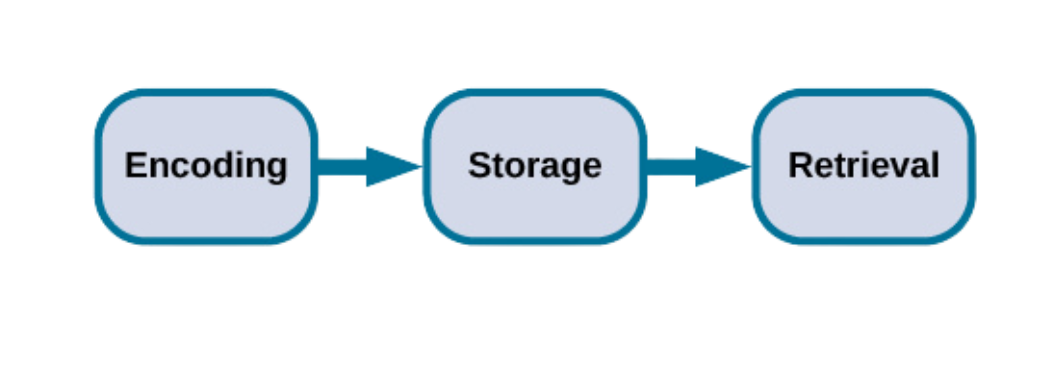Memory encompasses the processes we use to encode, store, and retrieve information.

Encoding: This is the first stage where sensory input is converted into forms that can be processed and stored in the brain.
The role of the hippocampus: Located in the temporal lobe, the hippocampus plays a critical role in processing all types of sensory information. It helps link new memories with existing ones and is crucial for memory consolidation—transforming new information into long-term memory. Damage to this area, such as in the case of the patient H.M., can prevent the formation of new declarative memories, while leaving older memories intact.
Storage: After encoding, information moves through several stages of storage:
Sensory memory: Initial, temporary storage for incoming sensory information.
Short-term (working) memory: Active processing of information to retain it temporarily.
Long-term memory: The final, more permanent stage of memory, where information can be stored indefinitely.
Memory processes include the primacy effect (better recall of initial information) and the recency effect (better recall of the most recent information)
Sign up for free to take 5 quiz questions on this topic